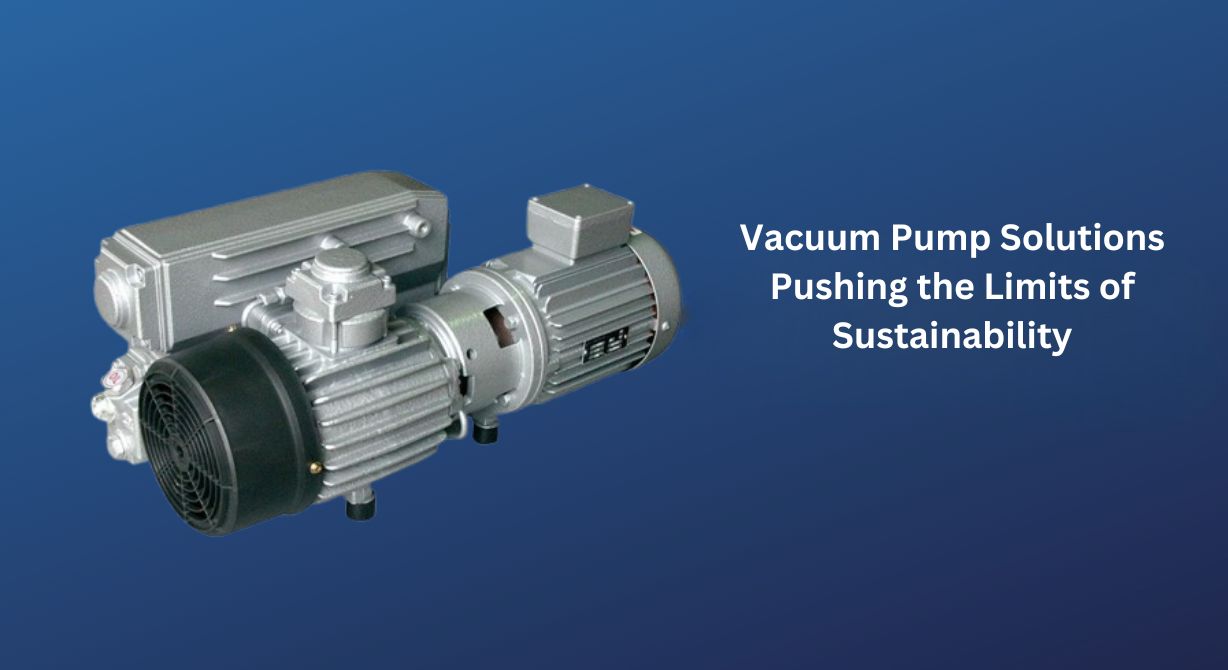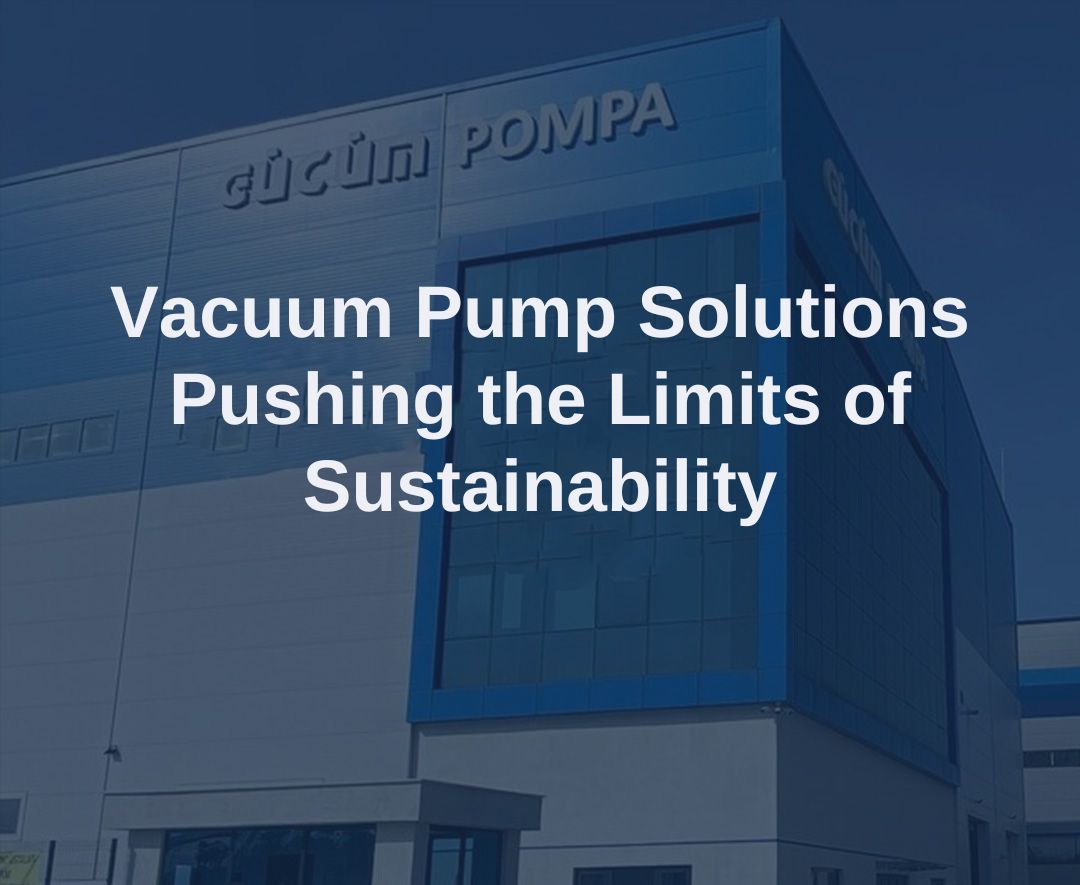Vacuum Pump Solutions Pushing the Limits of Sustainability
Table of Contents
- How Effective Are Sustainable Vacuum Pump Solutions Really?
- Energy Saving or Long Lifespan? Which Is More Important in Sustainable Vacuum Pumps?
- How Do the Vacuum Pumps of the Future Contribute to the Environment?
- Beyond Eco-Friendly Design: Vacuum Pumps That Push the Limits of Sustainability
- Differences Between Sustainable Vacuum Pumps and Classic Models
- A Step Ahead in Sustainability: A Guide to Choosing Eco-Friendly Vacuum Pumps
How Effective Are Sustainable Vacuum Pump Solutions Really?
Energy efficiency is one of the biggest claims of sustainable vacuum pump solutions today. Manufacturers are developing quieter, longer-lasting designs that consume less energy to reduce carbon footprints and total operating costs. But how effective are these vacuum pump solutions in reality? Are the data on paper, or do they really make a difference in the field?
Recent vacuum pump models have optimized rotor designs and advanced material technologies that provide lower friction coefficients. This reduces heat generation and ensures more stable performance. In addition, the use of recyclable materials extends the device's lifespan and minimizes environmental impact.
On the other hand, IoT integration and smart sensors enable real-time monitoring of vacuum pump performance, simplifying maintenance planning. This shortens unplanned downtime, reduces failure risks, and makes energy savings more controllable. Additionally, variable speed drives optimize power consumption according to demand, offering extra savings.
However, the true impact of these technologies varies by industry. For example, hygiene and stable pressure are paramount in food or pharmaceutical production, whereas durability and long operating hours are more critical in heavy industry. Therefore, when choosing a sustainable vacuum pump, not only theoretical data but also real usage scenarios, ease of maintenance, and total cost of ownership must be considered.
Energy Saving or Long Lifespan? Which Is More Important in Sustainable Vacuum Pumps?
Nowadays, many businesses face the same question when choosing a sustainable vacuum pump: Is consuming less energy or having a system that works flawlessly for many years more important? This dilemma is not only about cost but also critical for environmental impacts and production efficiency.
On one side, there is energy saving provided by advanced motor technologies and optimized designs. New-generation pumps working with lower friction, smart control systems, and variable speed drives reduce carbon emissions and operating costs. Especially when energy prices rise, these savings can shorten the investment payback period.
On the other side, the long lifespan factor stands out. High-quality materials, durable seals, and precision manufacturing of vacuum pump models reduce maintenance costs and provide uninterrupted service in the production line. Long-lasting pumps minimize unexpected breakdowns and thus reduce downtime and losses.
The real point is that these two features are not entirely independent. An efficient vacuum pump does not wear out early due to overheating or high friction, thus providing both long lifespan and energy saving. Therefore, it is a much smarter approach to evaluate models that balance both energy efficiency and durability rather than focusing on a single criterion.
How Do the Vacuum Pumps of the Future Contribute to the Environment?
The vacuum pumps of the future redefine industry standards not only in terms of performance but also environmental impact. Rising energy costs and environmental awareness push manufacturers to develop more sustainable vacuum pump solutions. This new generation of pumps significantly reduces carbon footprints with low energy consumption.
Thanks to advanced energy efficiency technologies, motors and drives used in pumps provide maximum performance with less power consumption. Moreover, smart sensors and IoT integration prevent unnecessary energy consumption by enabling real-time performance monitoring and early maintenance prediction.
The use of eco-friendly materials and recyclable components forms another key pillar of sustainability in vacuum pump manufacturing. Also, minimizing waste oil and chemicals reduces environmental risks in industrial processes.
Additionally, new designs reduce the noise level emitted during pump operation and decrease part wear through less mechanical friction, ensuring longer lifespan. This reduces resource consumption and decreases the frequency of pump replacements.
All these developments bring environmental sustainability in vacuum pumps to the forefront of business priorities and accelerate green transformation in industrial applications.

Beyond Eco-Friendly Design: Vacuum Pumps That Push the Limits of Sustainability
Today, vacuum pumps not only provide energy savings but also push boundaries in sustainability. This new generation of pumps goes beyond traditional eco-friendly design approaches, offering advanced solutions to minimize ecological impact in industrial applications.
Sustainable vacuum pumps stand out with high efficiency and low energy consumption. Smart control systems monitor pump performance in real-time, preventing unnecessary energy use and predicting maintenance needs in advance. This reduces both operating costs and environmental impact.
The preference for recyclable and environmentally friendly materials in manufacturing significantly lowers the carbon footprint throughout the pump’s lifespan. Additionally, optimizing waste management processes prevents harmful chemical releases into the environment.
Moreover, low friction technologies and advanced engineering designs increase performance while minimizing part wear. This allows the device to operate smoothly for longer periods, reducing resource consumption.
In conclusion, sustainable vacuum pump solutions not only protect the environment but also raise industry standards, playing a critical role in the production processes of the future.
Differences Between Sustainable Vacuum Pumps and Classic Models
Nowadays, sustainable vacuum pumps offer many advantages compared to traditional models. Firstly, these vacuum pumps are designed to minimize environmental impacts and focus on energy efficiency. Classic models generally operate with high energy consumption and have higher environmental impacts.
Sustainable vacuum pumps are longer-lasting and more durable thanks to advanced material technologies. This reduces maintenance costs and waste generation. On the other hand, classic vacuum pumps typically require more frequent maintenance and have shorter lifespans.
Energy saving is one of the most important features of sustainable models. Equipped with smart control systems, these pumps optimize energy consumption according to operating conditions. In classic models, energy consumption is generally constant and inefficient.
Moreover, sustainable vacuum pumps provide high performance with low friction technologies and advanced engineering solutions, while performance degradation and wear are more common in classic models.
In conclusion, sustainable vacuum pumps have become a much more attractive option environmentally and economically compared to classic models.
A Step Ahead in Sustainability: A Guide to Choosing Eco-Friendly Vacuum Pumps
Choosing an eco-friendly vacuum pump is gaining increasing importance in industry in line with sustainability goals. These pump types reduce costs by providing energy efficiency and shrink the carbon footprint. When selecting, the pump's energy consumption, performance, and maintenance requirements should be prioritized criteria.
Sustainable vacuum pump models are designed to consume minimum energy thanks to low friction technologies and advanced motor systems. These features not only protect the environment but also provide significant savings in operating expenses over the long term. Also, high-efficiency pump models extend operational life and reduce maintenance frequency.
When choosing, the recyclability of the materials used should also be considered alongside pump performance. Eco-friendly vacuum pumps are made from non-toxic materials and offer advantageous solutions in terms of waste management.
Additionally, modern vacuum pumps equipped with IoT-enabled control systems optimize energy consumption and minimize failure risk. This technology allows real-time monitoring of pump performance, thus ensuring sustainability and efficiency together.
In conclusion, choosing an eco-friendly vacuum pump stands out as an environmentally respectful and economically beneficial step for businesses.


